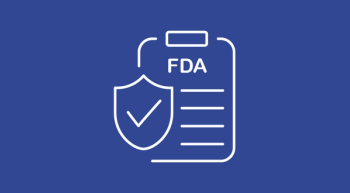
Generic Skin Cream Could Reduce Risk of Squamous Cell Carcinoma
The common skin cream fluorouacil 5%, when applied for 2 to 4 weeks, has been shown to reduce the risk for squamous cell carcinoma for up to a year, according to a study published in JAMA Dermatology.
Using the generic skin cream fluorouacil 5% (5-FU) for 2 to 4 weeks may reduce the risk for squamous cell carcinoma (SCC) for up to a year, according to a study published in JAMA Dermatology.
A previous study demonstrated that the same dose used to treat actinic keratosis, considered a pre-cancer growth, had a multi-year preventive benefit, including reduced incidence and less need for treatment. An additional study also showed the cream prevented new growths from emerging for 2 to 3 years.
In the meantime, current standards in preventing cutaneous basal cell carcinoma (BCC) and SCC, also known as keratinocyte carcinoma, include using sunscreen, oral medications or a “wait and cut” approach. However, none of these methods provide patients with long-term prevention.
“It is about time that we started taking a proactive role in trying to prevent these cancers instead of just treating them when they come up in people who have had these cancers before, and are at a very high risk of getting more,” said lead author Martin A. Weinstock, MD, PhD, a professor of dermatology at the Warren Alpert Medical School at Brown University.
In the Veterans Affairs Keratinocyte Carcinoma Chemoprevention Trial — a randomized, double-blinded, controlled clinical trial funded by the US Department of Veterans Affairs (VA) – researchers evaluated the use of 5-FU in more than 900 military veterans who were at high risk for keratinocyte carcinoma skin cancer.
Both groups of patients were almost exclusively white men, and an average age of 71, which is partially why it made sense to conduct this study at the VA, Weinstock said. “The highest risk for SCC is in older, sun-exposed, light skinned men, and that population is a large part of the people who come to the VA for their care. So, it made perfect sense for us to use this population to test this chemo-preventive treatment. We were able to show success in this population.”
The researchers randomized the veterans, who had at least two prior BCCs or SCCs, to receive either the 5-FU cream (468 patients) or a similar cream without the active ingredients (464 patients). Veterans were instructed to use their assigned cream twice a day for two to four weeks, applying it to their faces and ears. In addition, they were given 30 SPF sunscreen, as well as education regarding skin cancer, prevention and sun safety.
Weinstock, who is also chief of dermatology at the Providence VA Medical Center, noted that although sunscreen is still helpful in preventing skin cancers, it is still not enough. “It certainly works while you are using the sunscreen, but people do not use the sunscreen that consistently. They tend to use too little and too infrequently.”
After applying treatment for the recommended period of time, both groups went to their VA center twice a year for two to four years for follow-up exams with a dermatologist.
After the first year, 20 veterans in the control group developed SCC that required surgery compared with only 5 veterans who received 5-FU cream, which equated to a 75 percent reduction in the risk for developing this type of skin cancer.
For patients with BCCs, the researchers only observed an 11 percent reduction in risk for the disease. After the 4-year follow-up, 298 of all study participants developed at least one BCC, and 108 had developed at least 1 SCC.
In addition to its clinical effect, Weinstock also highlighted the fact that 5-FU can prevent or delay costly surgery, too. For example, Mohs surgery is an effective way to remove BCC or SCC, however, it is more elaborate and expensive. In the first year, 36 BCCs were treated with Mohs surgery in 27 participants in the control group, but only 17 BCCs were treated with the procedure among 14 patients in the 5-FU group.
“In a high-risk population, this can result not only in allowing them to avoid multiple surgeries on their face because some of these cancers are prevented, but also it could be a potential cost saver,” Weinstock added.
In conjunction with this, the researchers are currently evaluating the cost effectiveness of this regimen, in which Weinstock hopes to publish the results of that study this year.
“Cost is a big concern in provision of medical care these days, and so that becomes a major issue,” he added. “It is my hope that through this, and other means that will be documented in the future, that we can be successful in reversing the long-term rise in skin cancer risk that we have been experiencing.”
Newsletter
Knowledge is power. Don’t miss the most recent breakthroughs in cancer care.

















































































